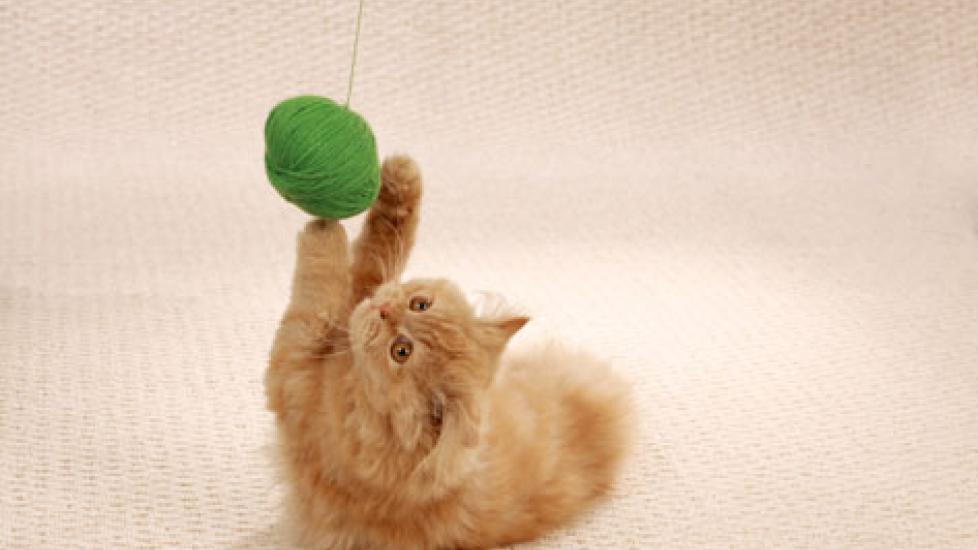Five Ways to Help Your Cat Slim Down
How to Battle Your Cat's Bulge
By Amanda Baltazar
Obesity is on the rise in cats. But it’s not just the discomfort of carrying around a few extra pounds that’s the problem: Overweight cats are more likely to suffer from other diseases including diabetes, arthritis and fatty liver syndrome, which can be lethal.
Our cats are becoming rounder, says Kerri Marshall, DVM, and executive vice president of customer experience with Trupanion. This is partially because there’s been a transition from cats being indoor-outdoor cats to them staying indoors all the time and thus getting much less exercise, she says.
To return your cat to his or her pre-obese shape, you need to consider both exercise and diet. Here are some other tips from Dr. Marshall…
1. Know Your Cat's "Body Condition Score”
Google "cat body condition score" and you will find that many websites provide pictures of cats from above and from the side to help you compare your own cat's status, whether he or she is overweight and by how much. In general, says Dr. Marshall, “you should be able to feel your cat’s ribs and his backbone. And check under the belly, which is a common place for fat to develop.”
Vet Recommended Cat Food
2. Buy Quality Cat Food
“A low cost pet food could have more fat or not the right nutrients in it,” Dr. Marshall says. Studies also show that it’s not just how much cats eat but the quality of what they eat. Higher-quality cat food contains better protein, and nutrients that are more readily digested. And, lower-quality cat food is often sprayed with fat for palatability, which is not the case with more expensive brands.
Your vet can recommend good brands of cat food and he or she can advise you on the correct portion sizes for your kitty — though most products contain recommendations on their packaging.
3. Exercise Your Cat
Many of us have busy lives but do try to schedule time to play with your cat into your daily routine. “Cats are one of the few pets that love to play and have a high play instinct — the predator instinct,” Dr. Marshall says.
Arm yourself with toys like mice on sticks and balls and encourage your kitty to climb by placing climbing structures around your home. Try to play with your cat and get her moving for at least 10 minutes a day. If she is very old or very obese, you may have to build up to 10 minutes.
Once you’ve encouraged your cat to move, she may surprise you and become more active on her own, since the mental stimulation will make your kitty more alert.
4. Use Cat Treats Effectively
Hide edible treats for your puss around the house and hide them at different levels so he or she has to climb to find them. If your cat can’t find the treats, help him out the first few times you hide them. Dr. Marshall warns that you should be very careful about hiding treats if there are dogs or small children around. Also, only buy healthy cat treats and always check the treat labels and ingredients list.
5. Gradually Initiate Weight Loss Routine
It’s really dangerous for a cat to not eat for a couple of days, says Dr. Marshall. “They can get fatty liver syndrome (hepatic lipidosis), which can cause them to go into liver failure.” Weight loss that’s too fast could also bring about inflammatory responses in the lungs and joints or hypoglycemia. Instead Dr. Marshall suggests that a cat initiate a gradual weight loss program and only after a veterinarian has checked the cat out for underlying diseases.
